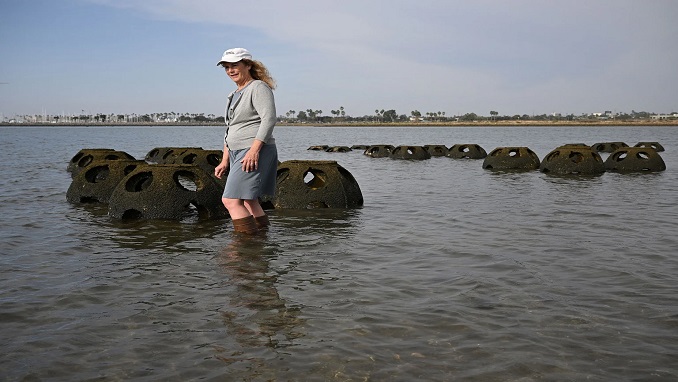
In its efforts to help combat sea-level rise, a dozen scientists in California look at numerous different ways, and oysters reefs in San Diego Bay are one of the tools to do that.
Eileen Maher, director of environmental conservation at the Port of San Diego, notes that thousands of the tiny mollusks have begun growing on the artificial reef balls they’ve dropped in the bay as part of their plan to mitigate damage in California’s far south and protect against coastal erosion wrought by rising sea levels.
According to a National Oceanic and Atmospheric Administration (NOAA) study released early this year, sea levels around California are expected to have risen 20 cm by 2050, which would drastically increase the frequency of flooding on the West Coast.
Last December, the port working on this pilot $1.3 million oyster reef project implanted 360 of these 135 kilograms hemispheres that look like huge thimbles along a peninsula wedged between the Coronado peninsula and the salt marshes of Southern California.
Being made from a mixture of cement, sand, and crushed oyster shells, which attracts living oysters to make their home there, these structures are now – after 10 months in the water – covered with greenish silt, which hides thousands of still-microscopic oysters.
The scientists believe that the formation of real oyster reefs – which essentially represent long-filament seagrass beds- will have a genuine impact on their local environment acting like much more than a natural bulwark against tidal erosion.
The miniature filtration plants on the reefs the oysters are feeding on are essential to the marine ecosystem because each one filters around 190 liters of water every day to capture the nutrients an oyster needs to survive.
By cleaning the water, these plants provide additional benefits to the submerged aquatic vegetation, the eelgrass, which helps with its presence to prevent shorelines from eroding. They also provide a crucial food source for the 80 species of fish and 300 varieties of birds living in the area.

Be the first to comment